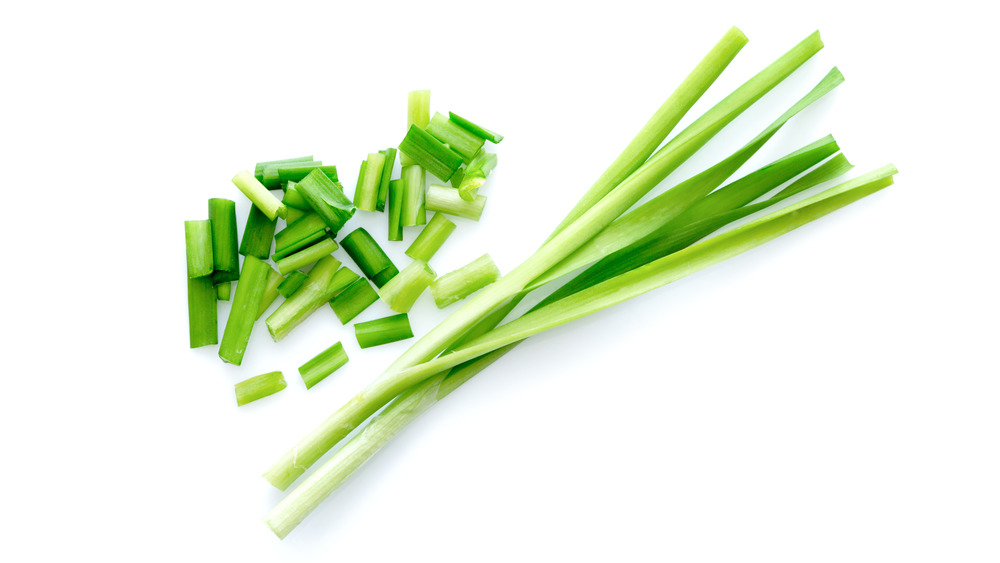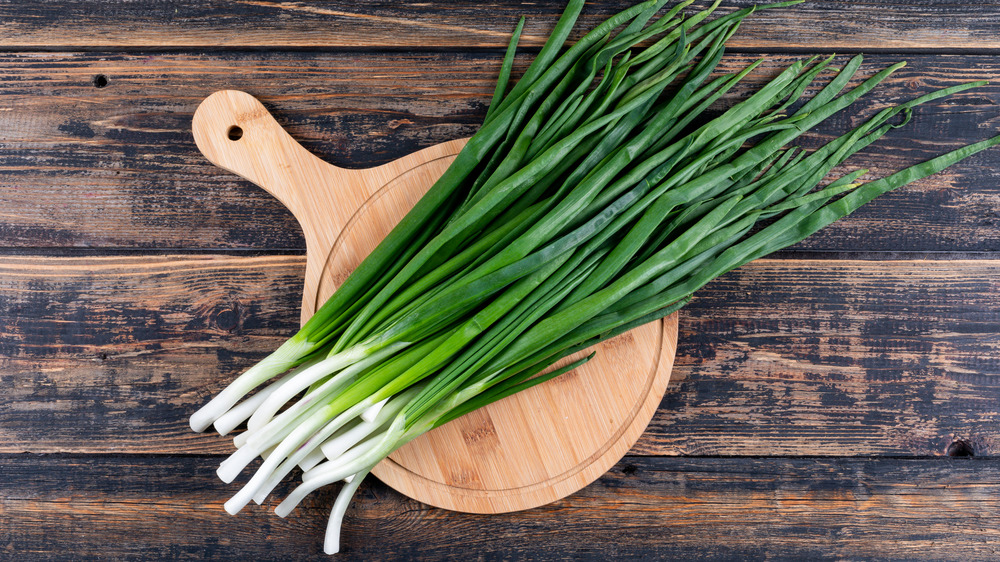Is There A Difference Between Scallions And Green Onions?
Scallions and green onions can make things pretty confusing in the grocery store produce section. Both have a white base and long, slim, hollow green leaves that make them ideal as a garnish that can be eaten cooked or raw. They are both a part of the onion family, as their taste and smell indicate. As an ingredient, they are used to spice up meals with their fresh, sharp, almost peppery flavor. All this means that it is almost impossible for the average person to tell them apart in a dish. In fact, because they look and taste so similar, it's common to wonder: is there even a difference between scallions and green onions at all?
That's a more than fair thing to wonder, because as it turns out, scallions and onions are basically two different names for the same thing, according to Bon Appétit. Both scallions and green onions actually come from the same plant, which is why they are so alike. However, while the names are used pretty much interchangeably, there are a few slight differences between green onions and scallions that could serve you well in the kitchen.
Scallions are harvested earlier than green onions
According to Healthline, the main difference between the two is that a scallion is younger than green onion. Scallions are harvested earlier in the year than green onions, and so have spent less time in the ground. As a result, they have slightly skinnier bulbs, which are about the same width as the plant's leaves. On the other hand, green onions are likely to have a larger, wider, and more oval-shaped bulb than their younger counterparts. Spring onions, by the way, are also from the same plant but are harvested even later than green onions.
Regardless of the name, eating scallions and green onions can provide many health benefits. Like other members of the allium family, these vegetables are both full of fiber, which can aid the body in fighting off various ailments like diabetes, heart disease, high cholesterol, and even cancer. Plants in the onion family also contain phytonutrients and antioxidants that can help protect against infections, inflammation, and cell damage. They are also rich in vitamin A, vitamin C, and vitamin K, along with plenty of other nutrients, while still remaining low in calories (via Livestrong). So no matter what you like to call them, don't forget to chop up a few of these bright green leaves the next time you're preparing a meal at home. Your body will thank you for it.

